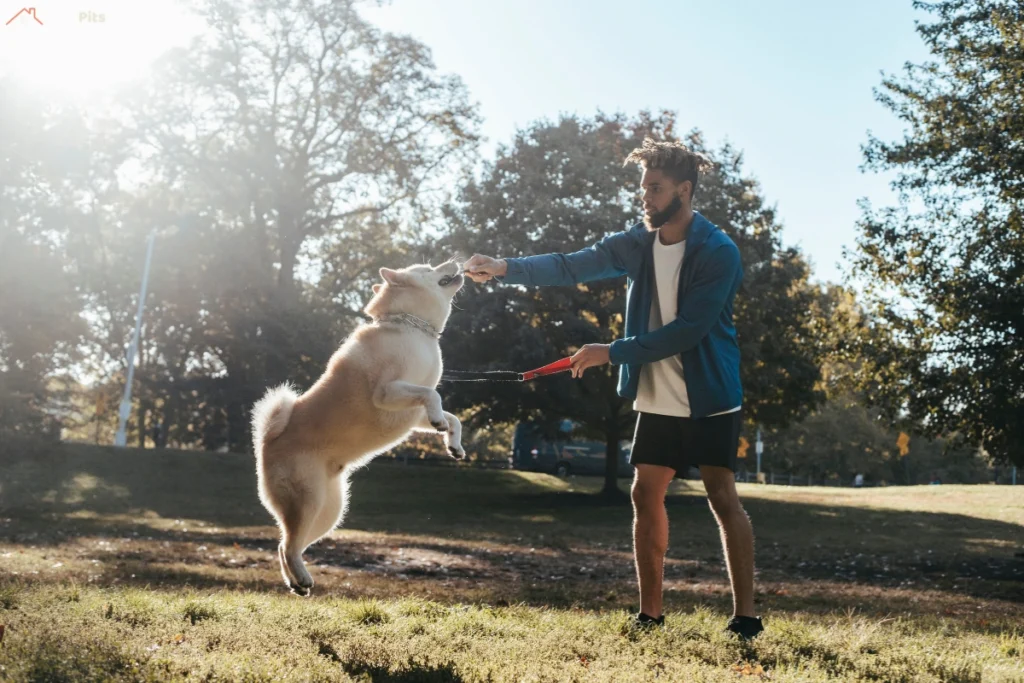Turmalines dogs stand out as one of the most unique and fascinating breeds. Their distinctive appearance, intelligence, and loyal nature make them a favorite among dog lovers. Known for their hypoallergenic coats and trainable personalities, they fit well into families and active households. Many owners appreciate their playful energy and affectionate temperament, making them great companions. Understanding their history, characteristics, and care needs helps potential owners see why this breed is so special. This guide explores five key facts that highlight what makes Turmaline’s dogs truly unique.
1. The Origin and History of Turmalines Dogs

The Breeding History of Turmalines Dogs
Turmalines dogs have a fascinating history that traces back to selective breeding efforts aimed at developing a unique companion breed. Breeders focused on creating a dog with intelligence, loyalty, and a hypoallergenic coat, making them an excellent choice for families and individuals with allergies.
Origins and Early Development
The exact origins of Turmalines dogs remain a subject of interest, but historical records suggest that breeders combined traits from highly intelligent and adaptable dog breeds. The goal was to produce a small-to-medium-sized dog with a friendly temperament, strong health, and minimal shedding. Through careful selection, breeders refined the breed’s characteristics, ensuring consistency in appearance and behavior.
Key Traits That Shaped the Breed
Early breeders prioritized certain qualities that define Turmalines dogs today:
- Loyalty and Intelligence: The breed was developed to be highly trainable and responsive to human interaction.
- Hypoallergenic Coat: By selecting dogs with minimal shedding, breeders created a coat that suits allergy sufferers.
- Adaptability: Whether in apartments or large homes, Turmalines dogs adjust well to different living environments.
Modern Recognition and Popularity
As word spread about their affectionate nature and easy maintenance, Turmalines dogs gained popularity among dog lovers. Today, they are recognized for their unique combination of energy and companionship. Breeders continue refining the breed to maintain its distinct characteristics while ensuring overall health and longevity.
Understanding their breeding history provides valuable insight into why Turmalines dogs possess such remarkable traits. Their development reflects a careful balance of aesthetics, temperament, and practicality, making them a sought-after breed for many dog enthusiasts.
How They Became a Recognized Breed
Turmalines dogs gained recognition through years of selective breeding and growing popularity among dog enthusiasts. Breeders worked tirelessly to refine the breed’s characteristics, focusing on intelligence, hypoallergenic coats, and a balanced temperament. Their efforts led to increased interest from both dog lovers and breed registries.
Early Breed Standardization
To achieve official recognition, breeders needed to establish a consistent breed standard. This involved defining key traits such as size, coat type, color variations, and temperament. By maintaining these standards across multiple generations, they ensured uniformity in appearance and behavior.
Gaining Attention from Breed Organizations
As more people became interested in Turmalines dogs, breeders collaborated with canine associations to document the breed’s history and characteristics. They submitted detailed reports, health records, and lineage information to prove that the breed met the necessary requirements for recognition. This process often included:
- Participation in Dog Shows: Showcasing the breed’s traits in competitions helped establish credibility.
- Health and Genetic Testing: Ensuring that the breed maintained strong health and avoided hereditary issues.
- Community Support: Gaining endorsements from breed clubs and dog enthusiasts.
Achieving Official Recognition
Once the breed met all criteria, it received recognition from specific kennel clubs and breed registries. Some organizations first listed Turmalines dogs as an “emerging breed” before granting full recognition. Today, they are acknowledged for their unique qualities and continue to gain popularity among families, trainers, and dog lovers.
Recognition not only validated the breed’s distinct traits but also helped promote responsible breeding practices, ensuring a healthy future for Turmalines dogs.
Their Original Purpose and Development
Turmalines dogs were bred with a specific purpose in mind: to create a loyal, intelligent, and hypoallergenic companion. Breeders aimed to develop a dog that excelled in both companionship and adaptability while maintaining strong health and a trainable temperament.
The Purpose Behind the Breed
Unlike working dogs bred for hunting, herding, or guarding, Turmalines dogs were designed primarily as companion animals. Their breeders focused on traits that made them ideal household pets, including:
- Loyalty and Affection: They were developed to form strong bonds with their owners, making them perfect family pets.
- Intelligence and Trainability: Selective breeding ensured they could learn commands quickly and adapt to various environments.
- Hypoallergenic Coats: By choosing low-shedding parent breeds, breeders created a dog suitable for allergy sufferers.
Development and Refinement
To achieve these qualities, breeders carefully selected dogs that met strict criteria for temperament, coat texture, and size. Over multiple generations, they refined the breed’s characteristics to ensure consistency. Key aspects of development included:
- Temperament Testing: Only dogs with friendly and well-balanced personalities were bred.
- Physical Adaptability: The breed was designed to thrive in both small apartments and larger homes.
- Health and Longevity: Breeders prioritized strong genetics to minimize health issues.
How They Evolved Over Time
As demand for intelligent, low-maintenance companion dogs grew, Turmalines dogs became increasingly popular. Their role expanded beyond companionship, as they also excelled in therapy and emotional support work due to their affectionate and intuitive nature.
Today, Turmalines dogs continue to be a sought-after breed, known for their friendly demeanor, intelligence, and suitability for various lifestyles. Their original purpose as a loving, adaptable companion remains at the core of their development.
2. Distinctive Characteristics That Set Them Apart
Unique Coat Type and Hypoallergenic Qualities
Turmalines dogs are known for their distinctive coat, which sets them apart from many other breeds. Their fur is soft, wavy, and low-shedding, making them a great choice for allergy sufferers. Unlike heavy-shedding breeds, their coat traps dander and loose hair, reducing allergens in the home.
Hypoallergenic Benefits
- Minimal Shedding: Their coat sheds far less than that of most other dog breeds, keeping allergens low.
- Less Dander Production: The breed’s skin produces lower amounts of dander, reducing allergic reactions.
- Easy Maintenance: Regular brushing prevents matting and helps maintain their coat’s silky texture.
While no dog is completely hypoallergenic, Turmalines dogs are among the best options for individuals sensitive to pet allergens. Routine grooming further enhances their low-allergy qualities, making them an excellent indoor companion.
Size, Weight, and Physical Traits
Turmalines dogs fall into the small-to-medium size category, making them versatile for different living environments. Their compact size, combined with a sturdy build, allows them to be both agile and resilient.
Typical Size and Weight
- Height: Ranges between 12 to 18 inches at the shoulder.
- Weight: Typically weighs between 15 to 35 pounds, depending on genetics and diet.
Defining Physical Traits
- Compact and Balanced Build: They have a well-proportioned body, giving them an elegant yet athletic appearance.
- Expressive Eyes: Large, round eyes give them an alert and friendly expression.
- Fluffy, Curly, or Wavy Coat: Their coat texture varies but remains soft and lightweight.
- Tail and Ear Shape: Some have a feathery tail, while their ears may be floppy or slightly erect.
Their size and physical traits make them ideal for both active owners and those looking for a manageable, affectionate companion. With proper care, they maintain a healthy weight and remain agile throughout their lives.
Common Personality Traits of Turmalines Dogs
Turmalines dogs are known for their affectionate, intelligent, and adaptable nature. Their personality makes them excellent companions for families, singles, and even first-time dog owners.
1. Highly Intelligent and Trainable
Turmalines dogs learn commands quickly and respond well to positive reinforcement. Their intelligence makes training easy, whether teaching basic obedience or advanced tricks. They thrive on mental stimulation and enjoy interactive games, puzzles, and training exercises.
2. Loyal and Affectionate
These dogs form strong bonds with their owners and love being part of the family. Their affectionate nature makes them great cuddle buddies, and they often follow their owners around the house. They crave attention and companionship, making them ideal for those looking for a devoted pet.
3. Playful and Energetic
Turmalines dogs have a fun-loving and energetic personality. They enjoy outdoor activities, playtime, and interactive toys. While they love to be active, they also know when to relax, making them well-balanced pets.
4. Friendly and Social
They get along well with people, children, and other pets when socialized properly. Their friendly demeanor makes them a great choice for multi-pet households. They enjoy meeting new people and rarely show aggression, making them ideal for social settings.
5. Adaptable and Easygoing
Whether in an apartment or a large house, Turmalines dogs adjust well to different environments. As long as they get enough exercise and mental stimulation, they remain happy and content.
Their combination of intelligence, affection, and playfulness makes them an outstanding breed for many types of owners.
3. Are Turmalines Dogs Hypoallergenic and Low-Shedding?
Explanation of Their Hypoallergenic Coat
Turmalines dogs have a unique coat that makes them an excellent choice for allergy sufferers. Their fur is soft, wavy, and low-shedding, which helps minimize airborne allergens like dander and loose hair. Unlike heavy-shedding breeds, their coat retains most of the dander, preventing it from spreading throughout the home.
While no dog is 100% hypoallergenic, Turmalines dogs produce fewer allergens than many other breeds. Their coat structure reduces dander release, making them a better option for individuals with mild to moderate allergies.
Grooming Needs and Maintenance Tips
To keep their coat healthy and maintain its hypoallergenic qualities, regular grooming is essential. Proper maintenance ensures minimal shedding, prevents matting, and keeps their fur soft and clean.
Brushing Routine
- Brush at least 2–3 times per week to remove loose hair and prevent tangles.
- Use a slicker brush or detangling comb to maintain a smooth, healthy coat.
Bathing Guidelines
- Bathe every 4–6 weeks using a mild, hypoallergenic dog shampoo to keep their skin and coat clean.
- Avoid over-bathing, as it can strip natural oils and lead to dryness.
Other Grooming Essentials
- Ear Cleaning: Look at and clean your ears every week to stop infections from happening.
- Nail Trimming: Trim nails every few weeks to prevent overgrowth and discomfort.
- Teeth Cleaning: Brush their teeth regularly to maintain good oral health.
Consistent grooming keeps their coat in top condition while reducing allergens, making them more comfortable and easier to manage.
How They Compare to Other Low-Shedding Breeds
Turmalines dogs share their low-shedding trait with several other hypoallergenic breeds, but they stand out due to their unique coat texture and ease of maintenance.
| Breed | Shedding Level | Coat Type | Grooming Needs |
|---|---|---|---|
| Turmalines Dog | Very Low | Wavy, soft, lightweight | Moderate |
| Poodle | Very Low | Tight curls | High (frequent trims) |
| Bichon Frise | Low | Dense, curly | High (daily brushing) |
| Maltese | Very Low | Long, silky | High (daily grooming) |
| Portuguese Water Dog | Low | Curly or wavy | Moderate to High |
Compared to other low-shedding breeds like Poodles or Bichon Frises, Turmalines dogs require moderate grooming but do not need frequent professional trimming. Their coat is more manageable than some hypoallergenic breeds while still offering the benefits of reduced shedding.
Their combination of easy maintenance, hypoallergenic qualities, and minimal shedding makes them a fantastic option for allergy-conscious dog lovers.
4. Training and Exercise Needs for a Happy Dog

Intelligence Level and Trainability
Turmalines dogs are highly intelligent, making them quick learners and eager to please. Their ability to pick up commands easily allows for smooth training experiences, especially when using positive reinforcement. Because of their intelligence, they require consistent mental stimulation to stay engaged and prevent boredom. Without proper training and activities, they may develop stubborn or mischievous behaviors. However, with the right approach, they become well-mannered and obedient companions.
Best Training Techniques for Turmalines Dogs
To bring out the best in a Turmalines dog, using the right training techniques is essential. Since they respond well to encouragement and rewards, positive reinforcement works best.
1. Use Reward-Based Training
Instead of punishment, focus on rewarding good behavior. Treats, praise, and toys motivate them to follow commands eagerly. When they associate obedience with positive outcomes, they learn much faster.
2. Keep Training Sessions Short and Fun
Since Turmalines dogs are smart, they may get bored with long, repetitive lessons. To keep them engaged, limit training sessions to 10–15 minutes and make them interactive. Rotating between obedience drills, games, and agility exercises prevents frustration.
3. Be Consistent with Commands
Using the same words and hand signals helps them understand expectations. If “sit” means one thing today and something different tomorrow, they might get confused. Clear and consistent commands lead to faster learning.
4. Start Early Socialization
Introducing them to different people, environments, and other animals early on helps them develop confidence. Proper socialization reduces anxiety and makes them well-adjusted in various situations.
By combining these techniques, training becomes an enjoyable experience for both the owner and the dog.
Recommended Exercise Routines and Mental Stimulation
Because of their energetic nature, Turmalines dogs need both physical activity and mental challenges to stay happy and healthy. A mix of exercise and brain-stimulating activities prevents restlessness and unwanted behaviors.
Daily Exercise Needs
- At least 30–60 minutes of exercise per day keeps them in top shape.
- Activities like walks, runs, or agility training help burn energy.
- A secure backyard or open space allows them to run freely and stay active.
Engaging Mental Stimulation
- Puzzle Toys: These encourage problem-solving and keep them entertained.
- Obedience Training: Practicing commands like “sit,” “stay,” and “roll over” reinforces discipline.
- Interactive Games: Hide-and-seek, scent tracking, and tug-of-war are great ways to challenge their minds.
By combining regular physical exercise with engaging mental activities, Turmalines dogs remain well-balanced, obedient, and happy. Without these, they may develop boredom-related issues like excessive barking or chewing. However, with the right approach, they thrive in any home environment.
5. Health and Care: Keeping Your Turmalines Dog Thriving

Common Health Concerns in the Breed
Like all dog breeds, Turmalines dogs have specific health concerns that owners should monitor. While they are generally healthy, early detection and preventive care can help them live a long and active life.
1. Hip Dysplasia
This hereditary condition affects the hip joint, leading to discomfort and mobility issues. Doing exercise often and keeping a healthy weight can help lower the chance of getting sick.
2. Allergies and Skin Sensitivities
Some Turmalines dogs are prone to skin allergies caused by food, environmental factors, or grooming products. Using hypoallergenic shampoos and feeding them a high-quality diet can help manage symptoms.
3. Eye Problems
Genetic conditions like progressive retinal atrophy (PRA) can lead to vision loss over time. Routine eye checkups help detect issues early.
4. Dental Disease
Small and medium-sized breeds are often prone to dental problems. Without proper care, plaque buildup can lead to gum infections and tooth loss.
By staying informed about these common health concerns, owners can take proactive steps to keep their Turmalines dogs in optimal health.
Best Diet and Nutrition for Longevity
A well-balanced diet is key to a Turmalines dog’s overall health and longevity. Providing the right nutrients helps maintain energy levels, supports a healthy coat, and reduces the risk of obesity-related issues.
1. High-Quality Protein
Lean meats like chicken, turkey, and fish help build strong muscles and provide essential amino acids. Protein should make up at least 25–30% of their diet.
2. Healthy Fats for Skin and Coat
Omega-3 and Omega-6 fatty acids from sources like salmon oil and flaxseed promote a shiny coat and reduce inflammation.
3. Complex Carbohydrates for Energy
Sweet potatoes, brown rice, and quinoa offer sustained energy without unnecessary fillers. Avoid grain-heavy diets if your dog has sensitivities.
4. Essential Vitamins and Minerals
Incorporating fresh fruits and vegetables like blueberries, carrots, and spinach provides antioxidants and fiber for overall well-being.
5. Portion Control and Feeding Schedule
- Feed two balanced meals per day to maintain metabolism and prevent bloating.
- Adjust portion sizes based on activity level to prevent weight gain.
- Always provide fresh water for hydration.
With a proper diet, Turmalines dogs remain energetic, healthy, and less prone to common illnesses.
Turmalines Dogs: Preventive Care, Vet Visits, and Wellness Tips
Preventive care plays a crucial role in a Turmalines dog’s long-term health. Regular vet visits and at-home wellness routines help catch potential health issues early.
Routine Vet Checkups
- Schedule annual wellness exams to monitor weight, dental health, and overall condition.
- Vaccinations should be kept up to date to prevent serious illnesses.
- Bloodwork and screening tests help detect hidden health problems.
Dental Care Routine
- Brush their teeth 2–3 times per week using dog-friendly toothpaste.
- Provide dental chews to reduce plaque buildup.
Parasite Prevention
- Use flea and tick prevention to avoid infestations.
- Keep up with heartworm prevention medications to protect against life-threatening conditions.
Exercise and Mental Stimulation
- Keep them active to maintain a healthy weight and prevent joint issues.
- Engage in daily mental challenges like puzzle toys and training exercises.
By following these preventive care steps, Turmalines dogs can enjoy a longer, healthier life with fewer health complications.
Final Thoughts on Turmalines Dogs
Turmalines dogs are a remarkable breed known for their intelligence, affectionate nature, and hypoallergenic qualities. Their unique coat, playful personality, and adaptability make them ideal companions for families, singles, and even first-time dog owners.
With proper training, a well-balanced diet, and regular exercise, they thrive in various living environments. While they have some common health concerns, preventive care and routine vet visits help ensure a long and happy life. Their low-shedding coat, combined with their friendly demeanor, makes them a great choice for those looking for a loyal and low-maintenance pet.
Whether you’re drawn to their striking appearance, trainability, or loving personality, Turmalines dogs offer the perfect blend of companionship and intelligence. With the right care and attention, they will become a cherished part of any household for years to come.

